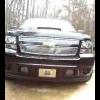-
Recently Browsing 0 members
No registered users viewing this page.
-
-
Recent Topics
-
- 400 comments
- 34,165 views
-
- 19 comments
- 382 views
-
- 3 comments
- 106 views
-
- 4 comments
- 204 views
-
- 2 comments
- 762 views
-
- 5 comments
- 1,611 views
-
-
-
Recent YouTube Posts




